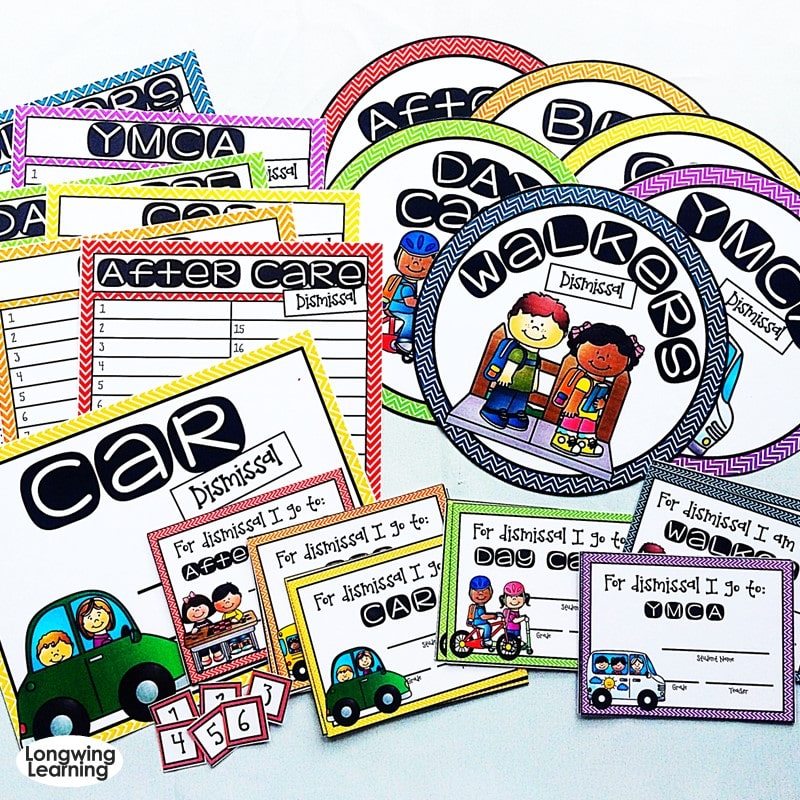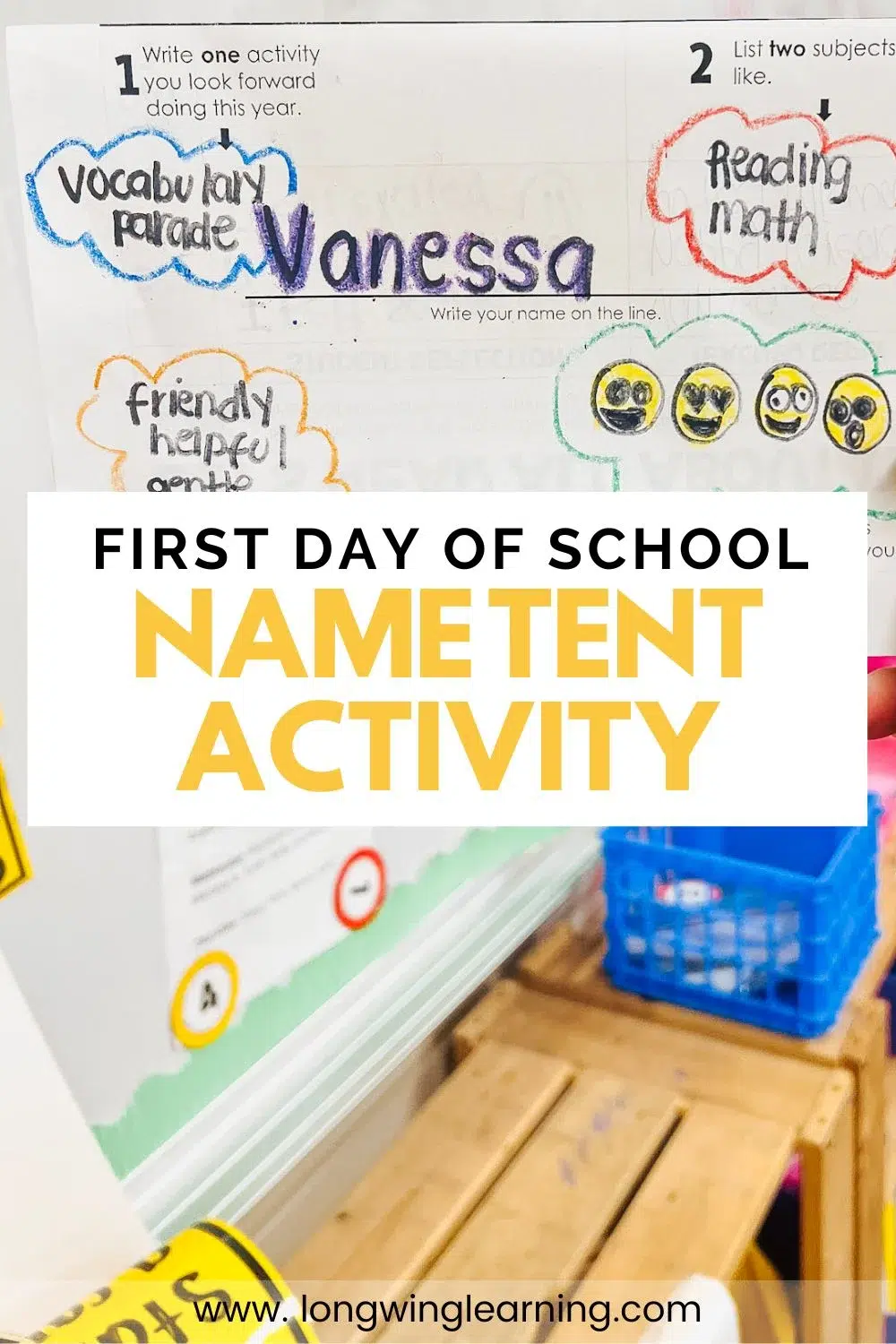Creating a conducive learning environment is vital for any classroom, and this holds particularly true when designing a functional and engaging reading classroom in 4th grade.
A well-thought-out classroom layout maximizes the space in the classroom and enhances the learning experience for both you and your students.
Read on to find practical tips about classroom decor and different classroom areas to create a functional and engaging reading classroom in 4th or 5th grade!
Table of Contents
Classroom Decor Tip #1 for Reading Classrooms: Make Intentional Decisions
When thinking of classroom decor for your reading classroom, making intentional decisions based on the classroom layout will save you time and money.
Before purchasing any type of classroom decor, decide on the colors you want to showcase in your classroom and the theme.
You don't need to have a color scheme and a theme. However, sticking with one help create a sense of unity and organization in any reading classroom.
So, what is the difference between a color scheme and a theme? Keep reading to find out!
Color Scheme
A color scheme is the color combination you pick to showcase in the classroom.
It is not limited to a specific theme and can be based on your personal preference or the preferences of your students.
One of the benefits of using a series of repeated colors as the base for your classroom decor is that it creates a cohesive look and feel.
It also makes shopping for paper and bulletin borders easier.
Use websites to find a color combination you like when picking a color scheme.
Here are two of my favorite websites offering extensive color combinations.
- https://colorhunt.co/
- https://colorkit.co/
Decorating your classroom with a color scheme involves selecting a few colors and incorporating them consistently across different parts of your classroom, such as bulletin boards, doors, and walls.
Consistently using your chosen colors helps create a sense of unity and organization in the classroom.
Classroom Themes
In contrast, a classroom theme centers around a specific concept or idea.
Examples of classroom themes could be sports, frogs, apples, or any other topic that resonates with your students.
When using a classroom theme, consider including related visuals and decorations that align with the chosen topic when implementing a classroom theme.
However, remember that a theme should not overshadow the primary goal of fostering a love for reading and learning.
Classroom Decor Tip # 2 for Reading Classrooms: Use headings to sections your walls
So, you've got a theme or a color scheme for your reading classroom. Great job!
Now, there's something important we need to talk about: your walls.
You see, decorating a classroom is quite different from decorating a house. Let me explain why!
In a house, things like frames and mirrors usually stay in one place on the walls. They're static, unchanging.
But guess what? Your reading classroom is a whole different ball game!
You won't believe how much what's on my walls change throughout the school year.
Let me give you the inside scoop.
At the beginning of the year, I start with key elements on my main wall, like our ELA alphabet, one prefix poster, and anchor charts.
As we dive into new affixes and word parts, I keep adding them to this space on the wall. Ultimately, it becomes a mural of our expanding vocabulary and language skills.
In addition, there are reading and writing anchor charts—those handy visual aids that guide our reading lessons.
And let's not overlook the fantastic projects students create. Their hard work deserves a spot on the walls too!
Trust me, it brings the room to life.
So, here's the secret sauce: plan and think about what you want on your wall throughout the year.
Instead of treating your walls like blank canvases waiting to be filled with frames and posters, let them reflect your classroom's growth and learning.
Ready to make your walls pop? Get creative by adding labels or headings.
Give your walls a purpose—a roadmap for the amazing things happening in your reading classroom.
Remember, your walls have a voice, so let them speak volumes about the incredible journey you and your students are on.
Classroom Decor Tip #4 for Reading Classroom: Make your classroom management part of your decor.
Now that you have a solid plan for your classroom walls let's shift our focus to something equally important: the items in your classroom that stay up year-round.
Believe it or not, these items play a significant role in classroom management.
Here are a few of my all-time favorites that I keep up throughout the year:
– Dismissal Chart: Making sure students get home safely is a top priority, right? That's why I rely on a trusty dismissal chart. I use a clip chart that displays different ways students can go home.

Each student has a clothespin with their name on it, and they clip it to the corresponding mode of transportation. It's a super effective way to keep track of dismissal details.
–1, 2, 3, 4 Levels of Understanding: Understanding how well your students grasp a concept is key to effective teaching. That's why I prominently display posters in the classroom.

These posters help students self-assess their comprehension throughout a unit. I also pair them with exit tickets to engage students and assess their knowledge of a learning objective.
–Hand Signals: Want to streamline instructions during lessons? Hand signals to the rescue! I have posters displaying hand signals as an alternative to students asking these common classroom requests.
It's as simple as students raising their hands with a specific number, and I respond with a thumbs up or down. It keeps things efficient and minimizes distractions.
By diving into this post, learn to use hand signals in the classroom!
–Keyboard Shortcuts: Ah, computer activities. They're a regular part of our classroom routine, especially when it comes to typing essays. To make things easier, I display posters with common keyboard shortcuts.
From copy and paste to cut and copy, these signs showcase the handy shortcuts in a visible classroom area. Trust me, students quickly become pros at navigating their way around the keyboard.
Since keeping them up all year is expected, finding a place for them in the classroom is essential.
Classroom Decor Tip #5 for Reading Classrooms: Plan Your Classroom Areas
It is vital to have a general idea of the classroom layout and the different areas it should encompass to create an optimal reading classroom in 4th and 5th grade.
These areas may include:
1. Classroom Library: A well-stocked and inviting library is the heart of any reading classroom. You can organize books by genre, reading level, or other categories to make it easier for students to locate and select books that interest them.
The cost of having a classroom library can add up very quickly. Consider alternative ways to get books, such as asking parents or your school PTA for donations, making a wish list, or checking out books from the library in bulk.
2. Reading Center Area: Designate a space where students can engage in independent reading or work on literacy-focused activities.
Reading centers can include comfortable seating, tables, and shelves with materials for various reading games and activities.
3. Small Group Area: Set aside an area where you can conduct guided reading or group activities. This space should have seating arrangements that promote collaboration and interaction.
4. Whole Group Area: Allocate space for whole-group instruction, where you can gather students for shared reading, read-aloud sessions, or interactive discussions. Consider having a rug or gathering area that fosters a sense of community.
An alternative to rugs can be sit spots or outlining the area with electrical tape. Electrical tape is much easier to remove than blue painter's tape.
5. Student Desks: Arrange student desks in a way that facilitates individual work while allowing for easy movement and access to classroom resources.
Additionally, if space permits, consider incorporating the following areas:
– Calm Down Corner: Provide a designated space where students can relax, regroup, or self-reflection when needed.
– Supply Station: Set up a station with individual or communal supplies, ensuring easy access for students during independent or group work.
– Teacher Storage: Allocate storage space for teacher materials, such as books, manipulatives, and instructional resources, to keep the classroom organized and functional.
Wrapping It Up
A well-designed classroom layout significantly impacts the overall learning experience in a reading classroom.
By making intentional decisions about decorating based on the layout, you can create an engaging and inviting environment for students.
Whether through color schemes or a classroom theme, the primary goal is to enhance the reading experience and promote a love for literacy.
Remember, a thoughtfully planned classroom layout sets the foundation for successful reading instruction and creates an environment where students can thrive.





1 thought on “Practical Tips for Classroom Decor: Designing a Functional and Engaging Reading Classroom in 4th Grade”
Pingback: Teaching Ideas for January - Creative Classroom Core